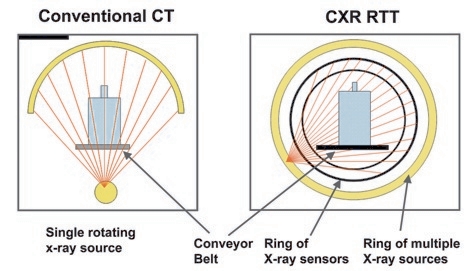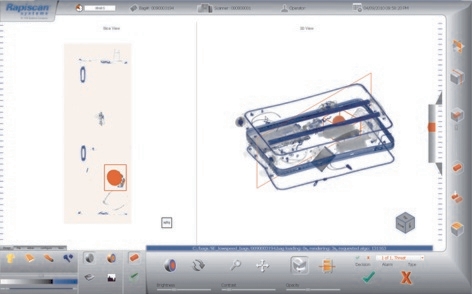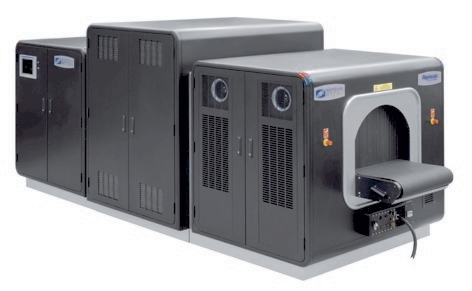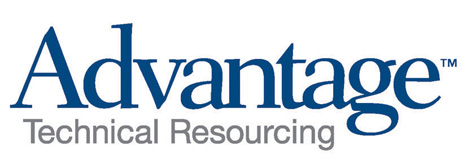The issue of airport security is never far from the headlines. Airline passengers are getting used to ever-increasing layers of searches and X-rays of themselves and their hand luggage. But the security systems that study our baggage once it’s checked in are hidden from our eyes.
Basically, suitcases and large bags go through bigger versions of the X-ray systems we’re familiar with from the security queue. If something suspicious shows up, however, the bag can be taken to a second line of security — a computerised tomography (CT) scanner, similar to those used in hospitals, which provides a cross-sectional image of the bag to investigate the threat. This double-layered security system is slow and requires extra operators, but is seen to be justified by the extra reassurance that nothing harmful is getting on the plane.
One way to speed up this system would be to pass all baggage through a CT scanner, but conventional systems are just too slow. However, airport security specialist Rapiscan has redesigned the CT machine to come up with a device, currently under trial, that could replace the double-layer system with a single CT scan in the same scanning time of the current first line of X-ray machines.
‘A conventional CT machine has a single X-ray generator, sometimes two, and an arc of detectors directly opposite,’ explained the leader of the team at Rapiscan which developed the technology, Ken Mann. ‘To take the scan, you rotate the gantry around the object. Because of the g-forces, you can only rotate at a maximum of two or two and a half revolutions per second. In our system, we replace that moving source with an array of static sources, all the way around the object, which we switch on and off in sequence. Even the fastest conventional CT machine is two-thirds slower than us.’

At the heart of the system is a new type of compact X-ray source. ‘We believe it’s unique,’ Mann said. Developed by Edward Morton, then at the University of Surrey’s physics department and now technical director at Rapiscan, the system replaces the single, moving X-ray source with a large, multi-focus X-ray tube which is toroidal — doughnut-shaped — and completely surrounds the object being scanned. The tube contains over a thousand switchable X-ray cathodes. ‘They’re also brighter than other sources that are used in security by a factor of four,’ Mann said.
The other innovative part of the system is the X-ray detectors. ‘Because we’re scanning so fast and therefore dwelling for a shorter time on each point, our detectors are both faster-reacting and more sensitive than any others we are aware of,’ said Mann.
Morton’s research was spun out of the University of Surrey eight years ago into a start-up called CXR, funded by Rapiscan and a number of venture capital funds; the company is now wholly owned by Rapiscan. Development of the X-ray tube was assisted by use of the facilities at the Daresbury Laboratory.
The unusual configuration of the system led to problems with obtaining an image, however. Unlike conventional CT machines, the detectors are not directly opposite the sources; instead, they are slightly offset. This meant that the mathematical algorithms used to convert the separate images obtained by each detector into a 3D image of the case were not known. ‘The offset arrangement of the detectors provides some issues with making sure you have enough coverage, and you have to do a certain amount of interpolation and approximation to cover the missed areas,’ Mann said.

To solve this, Rapiscan turned to Prof Bill Lionheart, an applied mathematician at the University of Manchester. Gaining a £500,000 grant from the EPSRC to investigate the problem, with matching funding from Rapiscan, Lionheart devised a system to model the X-ray scatter from the sources, and an algorithm based on multiple surfaces to reconstruct the image in real time, so that it can be viewed by an operator.
Collaborations between industry and academic mathematicians is relatively rare, and Rapiscan is particularly pleased that not only did the project result in new, cutting-edge mathematics, but it also brought the RTT80 scanner from proof-of-concept through prototyping and into a product that is ready to be brought to market within four years.
Despite the innovative technology and the much larger number of X-ray sources, Mann claims that the RTT80 is competitive in price with conventional CT. ‘The only way you can scan large volumes with conventional CT is to add more and more rings of detectors, and they are one of the biggest cost elements,’ Mann said. ‘And we are much faster than they are.’
Rapiscan hopes that RTT80 scanners would replace conventional X-ray systems completely, and leave no need for additional lines of scanning security. Manchester Airport trialled both the prototype and the pre-production version of the scanner, which has an 80cm aperture through which baggage can be passed. ‘The US government owns one of the pre-production models as well, and it is assessing it for widespread use,’ said Mann. Regulatory bodies in Europe are also assessing the machine, and further plans for the system include a larger toroidal Xray tube, allowing a reconstruction radius of 1.2m, allowing it to be used to scan larger items of freight.

The result, Mann believes, will be easier, faster and more accurate screening. ‘CT Has a proven ability to detect threats, and it also has a lower false-alarm rate than conventional projection X-ray screening,’ he said, ‘and we can use the RTT80 at the speeds that airports use for projection X-ray scanning at the moment, so it’s a simple drop-in replacement and wouldn’t disrupt their current practices. This system gives us fully 3D images which you can rotate, so there’s no way for one object to be obscured behind another.’
‘The upshot of this is that it provides better security and it’s more efficient,’ he concluded. ‘The number of people needed to view the images is reduced, so they can be refocused on improving security in other parts of the airport. You’re bringing the best technology available to the front end of the security system.’
Category Sponsor

FOSSI: Augmented reality military systems
Qinetiq, Qioptic
FOSSI, fall of shot simulated indicator, uses augmented reality to provide military trainees with an simulated of the impact that airborne weapons systems would have on the field of a training exercise. This means that training exercises will not need to include the costly and weather-dependent element of airstrikes. It can also be integrated with digital flight-simulators, so trainee aircrews can also take part in exercises
Lightweight steels for Queen Elizabeth Carrier flight deck
BAE Systems Surface Ships, Corus, Strathclyde University, Air Liquide Welding
To reduce the topside weight of the new Queen Elizabeth-class aircraft carriers, BAE Systems decided to develop a thinner grade of steel plate for the carrier flight deck. The project partners worked together to devise and analyse a calcium-treated steel that had not been used for naval applications, and to find a way to improve the welding speed.




Glasgow trial explores AR cues for autonomous road safety
They've ploughed into a few vulnerable road users in the past. Making that less likely will make it spectacularly easy to stop the traffic for...